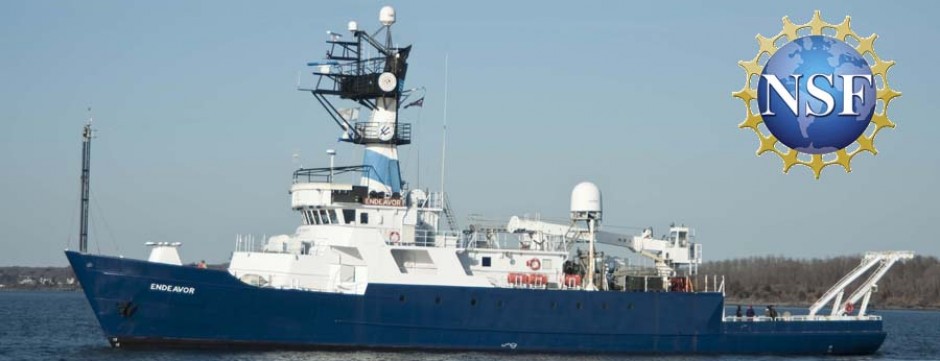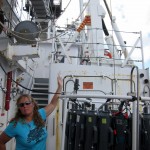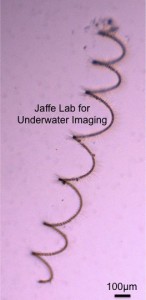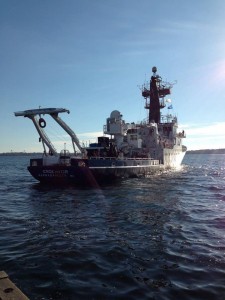In addition to my duties as Co-Chief scientist, I am investigating the sizes, types, and spatial distributions of particles throughout the water column. Particles are ubiquitous in the marine environment and play an important part in the ocean’s biogeochemical cycles. Because these particles are very small and often delicate, looking at these particles in their undisturbed natural environment is an excellent way to study them.
To accomplish this, I am using an Underwater Vision Profiler 5 (UVP5).
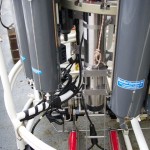
The UVP5 mounted on the CTD rosette.
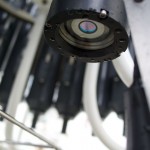
The UVP5 cameral peers down at the particles from within the CTD rosette.
Commercially available from its manufacturer Hydroptic, the UVP5 is a sophisticated underwater camera system complete with its own digital camera, lens, lighting system, onboard computer, and a suite of software tools that make it easy to process and analyze the images of particles that it captures. The instrument’s size makes it well suited to fit right into the CTD Rosette, meaning that it can be easily integrated into our oceanographic cruise plan since it does not require dedicated deployment time of its own that would add to our time at sea, or take away from other sampling opportunities.

Marine Snow imaged by the UVP5
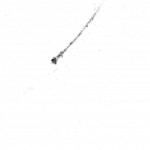
An elongated marine snow particle as imaged by the UVP5
Simply flipping through the images obtained by the UVP5 gives my colleagues and me an intuitive and qualitative understanding of exactly what tiny things are in the water. On a more quantitative basis, image analysis performed by the provided software tools enables us to count the particles, measure their size, shape, and other physical characteristics. This data will then be used to construct particle size distributions (number of particles per unit volume for each size bin), and eventually test hypotheses about how these properties vary with respect to depth, location, and other physical, chemical, and biological features in the ocean.
This is my first time using the UVP5, and I am quite impressed. I hope to purchase this instrument soon and use it as one of the core observational assets of my budding oceanographic laboratory at the University of Alaska Fairbanks. Many thanks to Hydroptic for letting me demo this instrument on this cruise.
Now it is time to grab some precious sleep during our transit out to the offshore stations!
Andrew McDonnell
Co-Chief Scientist
